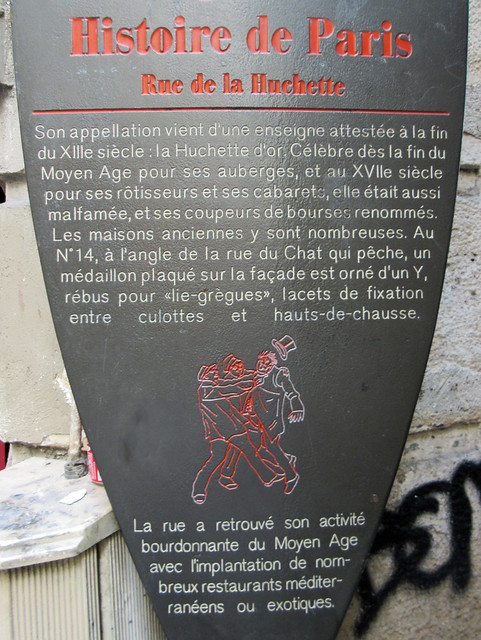Rue de la Huchette. Son appellation vient d'une enseigne attestée à la fin du XIIIe siècle: la Huchette d'or. Célèbre dès la fin du Moyen Age pour ses auberges, et au XVIIe siècle pour ses rôtisseurs et ses cabarets, elle était aussi malfamée, et ses coupeurs de bourses renommées. Les maisons anciennes y sont ombreuses. Au No 14, à l'angle de la rue du Chat qui pêche, un médaillon plaqué sur la façade est orné d'un Y, rébus pour "lie-grègues", lacets de fixation entre culottes et hauts-de-chausse. La rue a retrouvé son activité bourdonnante du Moyen Age avec l'implantation de nombreux restaurants méditerranéens ou exotiques.
corner of rue de la Huchette and rue de la chat qui Pêche, Paris
Google Streetview
OpenStreetMap
Subjects
None identified yet. Subjects are curated by hand so please bear with us.

